- Dr D Banerjee Centre of Excellence
- DBCOE
- Raghupati Singhania
- Dr Raghupati Singhania
- Mysore District Magistrate Lakshmikanth Reddy
- Dr R Mukhopadhyay
- V K Misra
- P K Mohamed
- JSS Mahavidyapeetha
Advancing Rubber Industry Deadlocks
- By Sharad Matade & Gaurav Nandi
- July 04, 2025
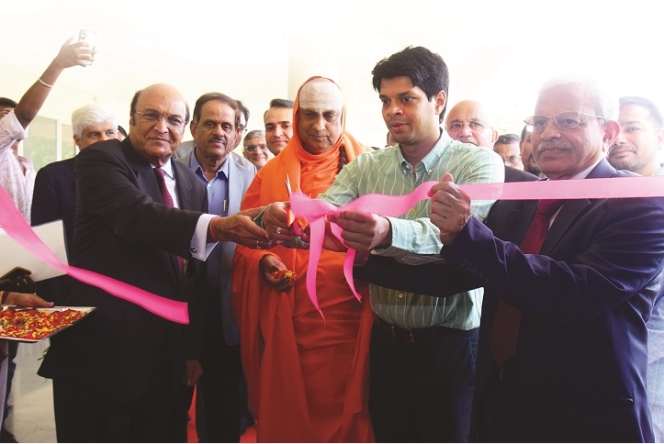
The launch of the Dr D Banerjee Centre of Excellence at JSS Technical Institutions marks a pivotal step towards transforming India’s rubber and tyre industry. By fostering collaboration between academia and industry, the centre aims to break longstanding deadlocks, equipping the workforce with advanced skills and driving innovation in polymer science and sustainable rubber technologies. With a focus on supporting MSMEs and addressing emerging challenges, especially those posed by electric vehicles and stricter regulations, the DBCOE seeks to become a national hub for research, training and certification, ultimately positioning India as a leader in the evolving global rubber sector.
The Indian Institute of Rubber (IRI) and JSS Technical Institutions inaugurated the Dr D Banerjee Centre of Excellence (DBCOE) recently at the Raghupati Singhania auditorium at JSS Technical Institutions’ Mysore campus.
The institute will serve as a proactive platform for academic and industrial collaboration for polymer science and rubber technology aiming to bridge different industrial deadlocks within the rubber industry.
The event was attended by JK Tyres and Industries CMD Dr Raghupati Singhania, Mysore District Magistrate Lakshmikanth Reddy (IAS), H.H. Jagadguru Sri Shivarathri Deshikendra Mahaswamiji, IRI Chairman Dr R Mukhopadhyay, IRI Vice Chairman V K Misra and industry veteran P K Mohamed, among others.
Setting the stage for the occasion, Mahaswamiji stated, “This is a remarkable coincidence that JSS Science and Technology is associating with Dr D Banerjee Centre of Excellence to usher in new vistas for innovation in rubber technology, where science meets technology for the benefit of society. The centre is dedicated to focusing on innovation, research and new product development and creating high-performance tyres, thereby contributing to sustainability efforts by developing eco-friendly tyre technologies.”
Drawing on the same lines, Misra went on to say, “This is a dream come true as the decision was taken to establish a Centre of Excellence at the occasion of IRCO RubberCon Conference held at Chennai in the year 2015. It gives all of us an immense sense of pride to be associated with the establishment of this Centre of Excellence. It will provide a unique platform to the rubber and allied industry for skill development, training, technology development etc. in the coming years.”
The centre honours the contribution of Dr Banerjee, a pioneering figure in Indian rubber and tyre technology. The initiative was supported by JSS Mahavidyapeetha, IRI and numerous industry leaders and technologists.
Dr Singhania was recognised at the event not only for his leadership in the tyre industry but also for his commitment to nation-building and youth empowerment.
“I am glad that the Indian Rubber Institute, in association with JSS Mahavidyapeetha and the larger Indian rubber fraternity, has set up this centre in memory of Dr Banerjee, the doyen and father of the Indian rubber industry. It is heartening to know that this Centre of Excellence has been established with a clear and noble vision. In fact, this initiative resonates deeply with our Prime Minister’s vision of a ‘Skilled India Mission’,” said Dr Singhania.
He added, “This centre has the potential to play a vital role in realising the vision within the rubber sector. I was delighted to tour the centre and see the comprehensive infrastructure and facilities put in place to fulfil these objectives. I am confident that this centre will soon earn the reputation and recognition it rightly deserves.”
A FULFILMENT CENTRE
According to Dr Singhania, in India’s rapid growth trajectory, institutions like this will play a crucial role in empowering youth with the skills needed to serve this vital sector. Vocational education is a key enabler of employability and plays a transformative role in facilitating a smooth transition of individuals into the industrial workforce.
“I am tempted to share our own experience with industry-academia partnership. We have been successfully running one at IIT Madras for the last 18 years. I believe this kind of close collaboration between industry and academia is something we have been missing in India, and it is indeed a critical step forward,” he stated.

India today stands at a unique juncture with a demographic advantage expected to last for the next 25–30 years. Equipping the population with the right skill sets – both technical and entrepreneurial – opens the opportunity to transform an advantage into a demographic dividend that drives economic growth not just within India but globally.
The employment landscape is evolving rapidly. Business models are being disrupted and new job roles are emerging at an unprecedented pace. The skills and job profiles that were relevant five years ago may no longer be sufficient today. This rapid change demands a dynamic skilling ecosystem – one that is agile, industry-responsive and inclusive.
To meet the future demands of the tyre and rubber industry, such as the increasing use of speciality polymers, advanced materials and the rising adoption of electric vehicles, a technically confident and highly trained workforce is needed.
“This Centre of Excellence can play a vital role not only as a hub for education and hands-on training but also as a platform for testing, research and technology development. Its contribution, particularly to MSMEs in the rubber and allied sectors, will be significant. This centre will evolve into a beacon for the rubber industry, not just in India but across the Asia-Pacific region,” said an optimistic Dr Singhania.
VETERAN’S TALK
Commenting on the occasion, former IRI Chairman P K Mohamed stated that after several years of earnest effort by the officials and members of the IRI, a world-class institute for rubber technology, education, research, testing and skill development has been established.
“Currently, industries recruit students directly from colleges after they complete their BTech degrees. These companies then invest one to two years in training them before assigning them to regular roles. This approach is both expensive and time-consuming. To address this, we propose the introduction of a preparatory course for students, developed jointly by industry and academic institutions, based on a mutually agreed syllabus. Experienced professionals from industry, raw material and equipment suppliers as well as research organisations could be invited to deliver these classes,” said Mohamed.
He added, “We are also in the process of working out an appropriate methodology for funding these programmes. This initiative will significantly benefit industries by enabling them to hire job-ready candidates directly, eliminating the need for extensive post-recruitment training.”
The industry veteran highlighted that forensic analysis of failed products remains a key challenge for small and medium enterprises. To address this, DBCOE has developed comprehensive analytical capabilities and plans to recruit a specialist for failure analysis. This facility will help industries identify root causes of failures and implement corrective actions to ensure continuity.
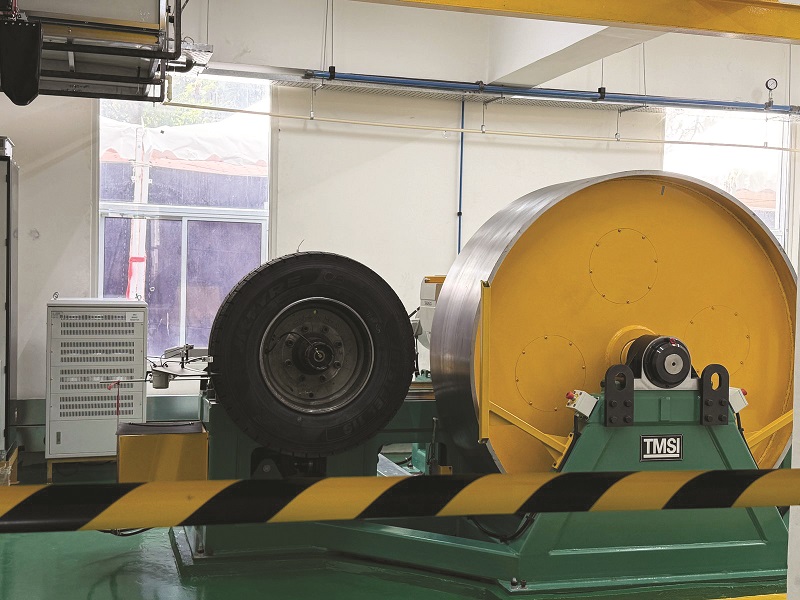
A material characterisation and wet chemistry lab has been set up to analyse raw materials such as carbon black, rubber chemicals, various rubbers, accelerators, antioxidants and process aids. In-house capability also exists to draft material specifications for future quality control. Plant audits and merit-based approvals can be arranged.
Plans are underway to offer short courses in collaboration with equipment manufacturers and suppliers. Topics will include mixing, extrusion, calendering, tyre building, compounding, engineering, moulding, retreading, footwear, belt technology and latex products. These courses will combine practical and theoretical content, including testing methods and failure analysis. Notably, discussions with HF Mixing Group on mixing technology are progressing well. Additionally, a recognition programme is being developed to honour individuals contributing to different segments.
DEFEATING DEADLOCKS
India’s automotive industry is undergoing a seismic shift, driven by the rapid adoption of electric vehicles and rising performance expectations. While tyres often dominate the conversation, rubber components account for up to 10 percent of the overall value in an automobile and its role is growing more critical than ever.
As vehicle design evolves, so do the demands on rubber parts in the wake of higher torque, lighter weight, reduced rolling resistance and near-silent operation as can be seen in case of EVs. For manufacturers, especially the MSMEs that make up much of the sector, these shifts present a formidable challenge. Existing designs and materials no longer suffice.
Speaking on the vision of the centre and how it will meet industry deadlocks, Dr Mukhopadhyay said, “The mission is fourfold viz-a-viz upskill the current workforce, offer technical support for regulatory compliance and homologation, enable technology advancement for MSMEs and drive sustainable material innovation in collaboration with raw material suppliers. This centre aims to be more than just an academic institution; it’s envisioned as an ecosystem that fuels India’s rubber sector with skilled talent and cutting-edge know-how.”
At the heart of the initiative lies a simple truth that knowledge alone is no longer enough. According to Dr Mukhopadhyay, India’s tyre and rubber sector needs a convergence of skill and science that demand a confluence of practical expertise and theoretical depth. With an eye on decarbonisation, the centre will also push research into bio-based alternatives for carbon black, synthetic rubber, tackifiers and processing oils. From tyre-to-tyre recycling to steel reuse and low-emission polymers, the effort reflects a broader ambition to modernise the industry not just for EV readiness but for long-term sustainability.
“In a market where regulatory demands are intensifying and global competitiveness is rising, this centre represents a strategic leap. It promises to future-proof India’s rubber industry by training the next generation, empowering MSMEs and leading the shift towards a cleaner, more resilient manufacturing base,” he said.
THE NON-TYRE SECTOR
The centre will primarily focus on the tyre industry but aims to support the wider rubber ecosystem, especially MSMEs producing non-tyre components. While large tyre firms have testing and certification infrastructure, smaller players often lack access to technology, skilled labour and analytical facilities. The centre will bridge this gap through hands-on training, consultancy and development support. It will act as a national hub for tyre technology, BIS certification and sustainability compliance while also helping non-tyre manufacturers enhance technical capabilities.
“This sort of institution has been both our dream and our vision. We’ve worked hard to bring it to life, and I’m heartened to see the industry now stepping up. Of course, execution and funding remain challenges. Nothing happens overnight, but I’m confident that with time and collective effort, we will overcome these hurdles. As a PhD holder in this field, I’ve witnessed the struggles students face, particularly during their research projects. Dealing with limited equipment, recruitment issues and maintenance challenges are plenty,” averred Dr Mukhopadhyay.
HURDLES IN THE WAY
Despite India’s robust tyre and rubber sector, a culture of collaboration remains elusive, especially among tyre companies, which have largely remained conservative and insular in their approach.
Industry veterans have long observed that companies prefer to operate in silos, wary that cooperation might breed competition.
According to Dr Mukhopadhyay, the initiative of collaboration has come in the form of grassroots movements like the Wisdom Club – an informal alliance led by senior industry professionals like himself and Mohamed – who have pooled their knowledge and experience to mentor the next generation and drive development where institutions have fallen short.
“Unlike government-backed Centres of Excellence, which number over 40 yet often lack focused activity, and with only one national body showing limited development momentum, these independent efforts fill a critical gap. Furthermore, there are no large grants, no access to state support and infrastructure must be built slowly, piece by piece – often through deferred payments and personal negotiations. We don’t have capital. Yet, against these odds, progress is being made often over decades.”
While attempts to find institutional partners in Chennai and other cities have met resistance or failed to materialise, the effort continues.
EDUCATIONAL PROWESS
Highlighting the nuances of the educational programmes offered by the centre, IRI Advisor S Vasudeva Rao mentioned, “The centre offers two flagship programmes, namely the Diploma in Rubber Technology for diploma holders and fresh recruits and the Postgraduate Diploma in Rubber Technology for science and engineering graduates. Both combine online theoretical modules (delivered on Sundays) with practical assignments and hands-on crash courses at the Mysuru campus. Final examinations are conducted and evaluated by IIT Kharagpur, lending strong academic credibility.”
Rao also noted that the new training powerhouse is an INR 280 million facility funded entirely through industry donations. It brings in over 40 industry experts to teach domain-specific topics ranging from tyre and conveyor technology to PU foams and latex composites. Curriculum is aligned with real-world applications and transparency is ensured via digital course materials and regular assessments.
The initiative has gained formal endorsement across the tyre industry. Companies like Apollo, Yokohama, BKT and JK Tyre now embed course completion as a pre-condition for employment confirmation, reimbursing 100 percent of the INR 40,000 course fee. While the centre is new, the course dates back to 1995 and over 1,200 professionals have graduated with average annual enrolment now exceeding 250.
The centre represents a rare model of successful industry-academia collaboration in India’s manufacturing sector, combining infrastructure, expertise and funding to systematically upskill the rubber workforce.
While the establishment of the DBCOE represents a significant milestone, the broader challenge lies in overcoming the entrenched conservatism and fragmented nature of India’s tyre and rubber industry.
Trelleborg Tires Retains Crown As Brazil's Best Agriculture Tyre
- By TT News
- December 07, 2025

For the second consecutive year, Trelleborg Tires has earned the prestigious title of Best Agriculture Tyre at the 22nd Visão Agro Brazil Awards. This 2025 accolade, presented during a ceremony in Ribeirão Preto, highlights the company’s dedicated role in advancing Brazilian agribusiness through technological leadership and a commitment to sustainable practices. The award was received on behalf of the company by Fábio Metidieri, Agri Sales Director for Yokohama TWS Brasil.
Central to this achievement is Trelleborg’s ongoing innovation, particularly the expansion of its ProgressiveTraction technology within the TM tyre series. This engineering, featured in models from the row-crop TM600 to the high-horsepower TM1000, utilises a dual-edge lug design. The tread operates progressively on the soil to enhance traction, promote self-cleaning and minimise vibration. The resulting benefits include improved operational efficiency, increased tyre durability and superior soil protection, directly supporting farmers’ goals for greater productivity and environmental stewardship.
The company’s deep roots in Brazil, supported by a specialised local team, rigorous field testing and strong manufacturer partnerships, ensure its solutions are finely tuned to regional demands. This local infrastructure allows for responsive technical service and keeps product development closely connected to the practical challenges faced by the agricultural sector. The Visão Agro Brazil Awards, judged by a panel of industry executives and researchers, serve as a recognised benchmark for innovation and performance, making this recognition a significant testament to Trelleborg Tires’ impact on the country’s farming landscape.
Metidieri said, “Receiving this award at such a prestigious event once again reinforces our commitment to Brazilian agriculture. Our goal is to keep advancing in technology and field performance, ensuring that every Trelleborg tyre delivers real value – helping farmers operate more efficiently, sustainably and profitably. This award reflects the trust placed in our team and our products by professionals throughout the sector. It strengthens our commitment to delivering technologies that address local challenges and help shape the future of Brazilian farming.”
Premium Makeover
- By Sharad Matade
- December 05, 2025
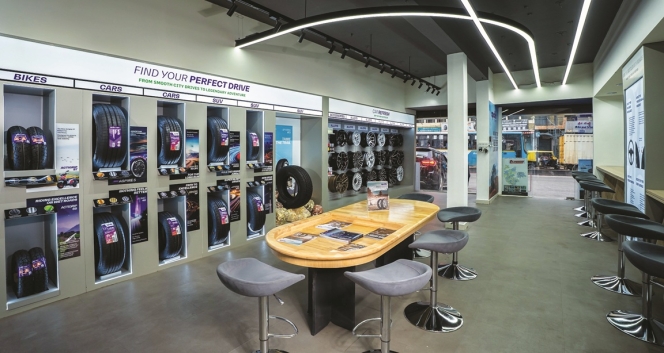
India’s tyre retail industry is undergoing a dramatic makeover, moving far beyond the cluttered workshops and transactional buying of the past. Fuelled by rising demand for premium vehicles, digital-first customers and stronger export momentum, tyre makers are transforming retail spaces into sleek, immersive experience centres. What was once a routine utility purchase is rapidly evolving into a premium, advisory-led mobility experience designed for a new generation of motorists.
India’s tyre retail scene is shifting gears, leaving behind the era of crowded workshops and impersonal counters. In their place, manufacturers are rolling out sleek, thoughtfully designed, tech-powered spaces that echo the luxury of high-end car showrooms. What started as a few bold pilots in big cities has quickly become the go-to playbook for tyre brands eager to win over a new generation of savvy, comfort-loving, digital-first customers.
From urban to rural areas, this transformation reveals a profound change in how Indians approach mobility. Today’s motorists – especially those behind the wheel of SUVs, luxury sedans and electric cars – want more than just a tyre swap. They crave expert advice, a polished atmosphere and a shopping experience that reflects the elegance of their vehicles. Once a utilitarian afterthought, tyre retail is now emerging as a coveted part of the automotive journey.
Strong OEMs and replacement demand in both domestic and export markets underpin the transition.
In FY 24-25, tyre exports from India surged by nine percent year-on-year to INR 251 billion, according to data released by the Ministry of Commerce. With an estimated annual turnover of INR 1 trillion and exports exceeding INR 250 billion, the Indian tyre industry stands out as one of the few manufacturing sectors in the country with a high export-to-turnover ratio.
Though tyre exports have hit a speed bump due to higher US tariffs on select categories of Indian tyres compared to those of competing nations, the long-term prospects for the Indian tyre industry remain strong. According to a joint report by ATMA and PwC India titled ‘Viksit Bharat 2047: Vision and Roadmap for the Indian Tyre Industry’, India’s tyre production volumes are projected to grow nearly fourfold by 2047, while industry revenues are expected to expand almost 12 times to about INR 13 trillion.
Against this backdrop, tyre makers are modernising aggressively to retain customers and build a more profound emotional affinity. The broad shift is visible in how retailers are reinventing their spaces. Lounges with crafted lighting, upholstered seating, minimalist décor and large digital walls are replacing traditional steel racks and dusty counters. Informational murals and heritage display trace decades of tyre innovation, strengthening brand storytelling. Stores increasingly feature curated experience zones where customers can explore tyre technologies, EV-compatible profiles, eco-friendly materials and performance characteristics through visual displays and interactive tools.
A clear sign of this trend is the rise of personalised, advisory-led engagement, replacing the old dependence on technicians. Retailers now profile driving habits, terrain usage, daily distance and vehicle type to recommend tyres customised to each consumer’s pattern. This service-led model is shifting the customer’s mindset from price-first decision-making to long-term value evaluation.
The new premium outlets are designed to deliver a lifestyle-driven, hospitality-grade experience rather than a traditional tyre shop visit. Customers receive personalised mobility recommendations tailored to their vehicle, driving style and needs, supported by smart service innovations like intelligent product selection, quick-fit services and digital scheduling. The space also acts as a community hub for driving enthusiasts, creating a connected ecosystem around the brand. With lounge-style comfort, immersive storytelling and specialised tyre and service packages for luxury and performance vehicles, the outlet blends convenience, premium care and brand-centric offerings into an elevated customer experience.
“Customer experience at the point of sale is another branding exercise poised to change buyer characteristics. Multi-brand outlets often commoditise the tyre-buying experience. That’s why companies are launching exclusive brand outlets with curated customer experiences. Over the next decade, new delivery models will emerge,” said Kavan Mukhtyar, Partner and Leader – Automotive, PwC India.
Apollo Tyres articulates this change as a move towards lifestyle-led retailing. Its new super-premium outlets have been built not as showrooms but as emotionally resonant spaces.
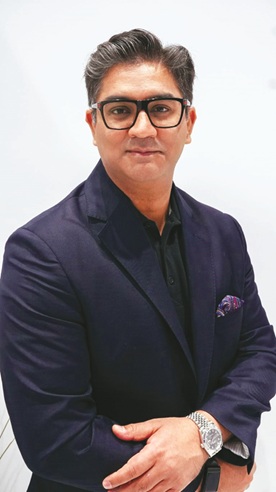
Udyan Ghai, Group Head of Marketing at Apollo Tyres, explained that the company’s new retail architecture is anchored in long-term strategic priorities: “Our move to a lifestyle-led, immersive tyre retail format is driven by our own desire for premiumisation and category leadership. We are looking at elevating tyre retail in India by setting new benchmarks and shifting from commodity selling to a premium, lifestyle-driven experience.”
He said the brand aims to ‘emotionally engage with customers, offer tailored solutions, build a community of driving enthusiasts and tap into premium segments – all while delivering a differentiated, modern retail experience’.
Ghai believes retail ambience plays a decisive role in influencing perception. “A relaxed and well-designed lounge signals comfort, trust and premium value,” he said, adding that such environments elevate tyres from a mundane requirement to a core element of vehicle care and identity.
Digital transparency, he believes, is the second pillar of modern tyre retail. “Digital systems ensure transparency and help demystify tyre selection – tread patterns, speed ratings, durability and fitment. Consumers feel less dependent on a technician’s word and more in control, which boosts their confidence and perceived fairness,” Ghai said.
Customers today are inundated with choices, and digital systems, he said, turn tyre buying into an ‘informed, personalised decision’, comparable to selecting a smartphone, a pair of performance shoes or even a detailed insurance plan. According to Ghai, this new retail model is ‘a strategic investment in the future of mobility retail’, designed to be scalable and to support community-building events, workshops and enthusiast interactions. As India moves towards EVs and connected cars, he said these premium outlets will provide EV-focused tyre expertise, interactive digital tools and personalised recommendations that appeal to younger, digitally savvy motorists.
CEAT shares a similar philosophy. Its national retail revamp focuses heavily on digital immersion, consistent messaging and design-led layouts. Lakshminarayanan B, the company’s Chief Marketing Officer, said the modernised CEAT Shoppes are fundamentally reshaping the category.
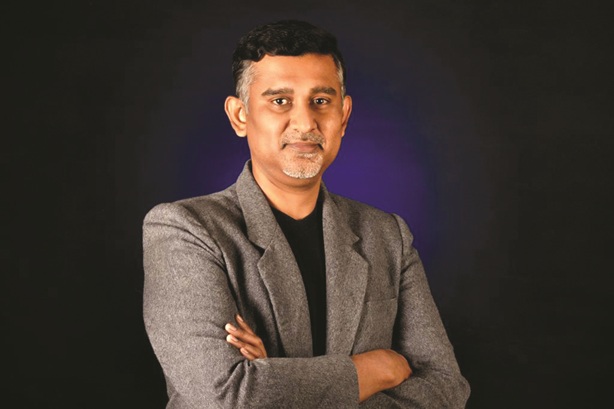
“The modern layouts and digital integration in CEAT Shoppes are revolutionising the tyre-buying experience, making it more experiential and customer-centric,” he said, adding that these updated outlets elevate the experience, build trust through uniform communication and drive decisions by reducing ambiguity around features and value.
Lakshminarayanan highlighted CEAT’s attempt to harmonise customer experience across demographics: “The approach in urban markets through premium stores, product offerings and services is to create access and aspiration for premium customers. The same is replicated in upcountry markets also.”
The CEAT Executive said the company is building for a future where personalisation will be the defining characteristic of tyre retail. “CEAT is focused to drive the future of tyre retail through end-to-end personalisation,” he said.
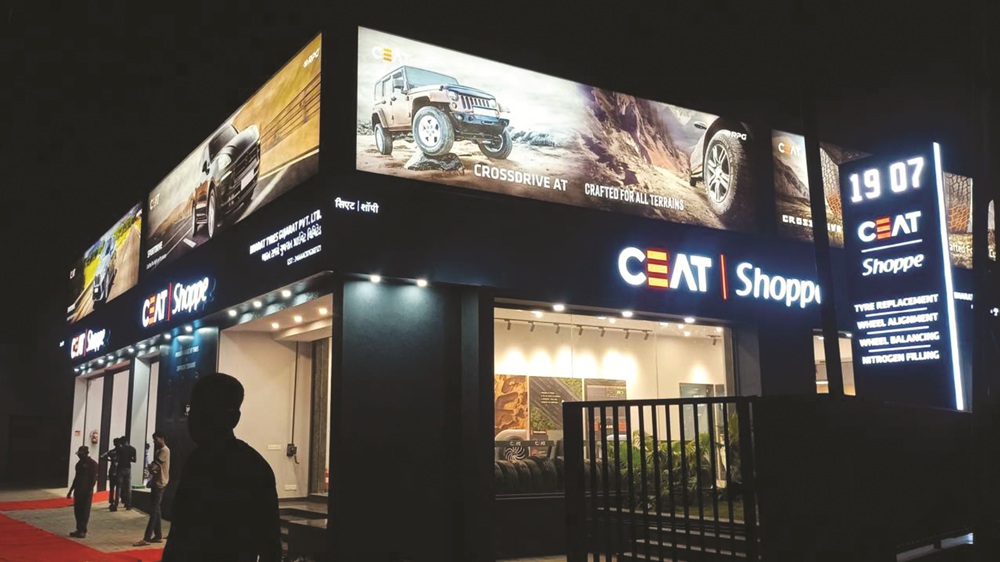
As experiential retail takes hold, service portfolios inside tyre stores are expanding faster than ever. Advanced wheel balancing, laser-driven alignment systems, nitrogen inflation, premium alloy wheel installations, EV-oriented tyre consultations, digital appointment scheduling and real-time tyre-health diagnostics are now standard. Many outlets also provide car detailing, interior cleaning, ceramic coating, PPF application, brake checks, battery inspections and multi-point vehicle health reports, making them full-fledged mobility centres.
Global players have pushed the envelope even further. Michelin’s 25,000-square-foot Experience Store in Nashik features a heritage wall and innovation displays showcasing electric mobility, materials science and environmental responsibility. It houses precision wheel-alignment bays, detailing studios, and accessory galleries. “We are proud to unveil Michelin’s first Experience Centre in India. The sole purpose of this store is to go beyond traditional tyre retail and provide customers with an immersive experience of the brand,” said Shantanu Deshpande, Managing Director of Michelin India.
Continental Tyres is also strengthening India’s premium retail ecosystem through its CPD outlets, which include ambient lounges, diagnostic equipment, premium alloy wheels and digitally enabled guidance. “With our new CPD store in Indore, we bring Continental’s promise of safety, innovation and comfort closer to Madhya Pradesh’s clients,” said Samir Gupta, Managing Director of Continental Tyres India. He added that the brand’s ‘In the Market, For the Market’ approach is central to its retail expansion strategy.
Even in rural markets, tyre retail is becoming more formalised, structured and service-oriented. JK Tyre’s ‘Steel Wheels’ format is targeted at towns with populations under 100,000 and offers standardised layouts, value-added services, best-in-market pricing and instant claim facilities. “Our Rural expansion programme will help us reach the interiors of the real Bharat that is economically vibrant but often underserved. We are not just building retail points; we are also enabling entrepreneurship and access,” said Managing Director Anshuman Singhania.
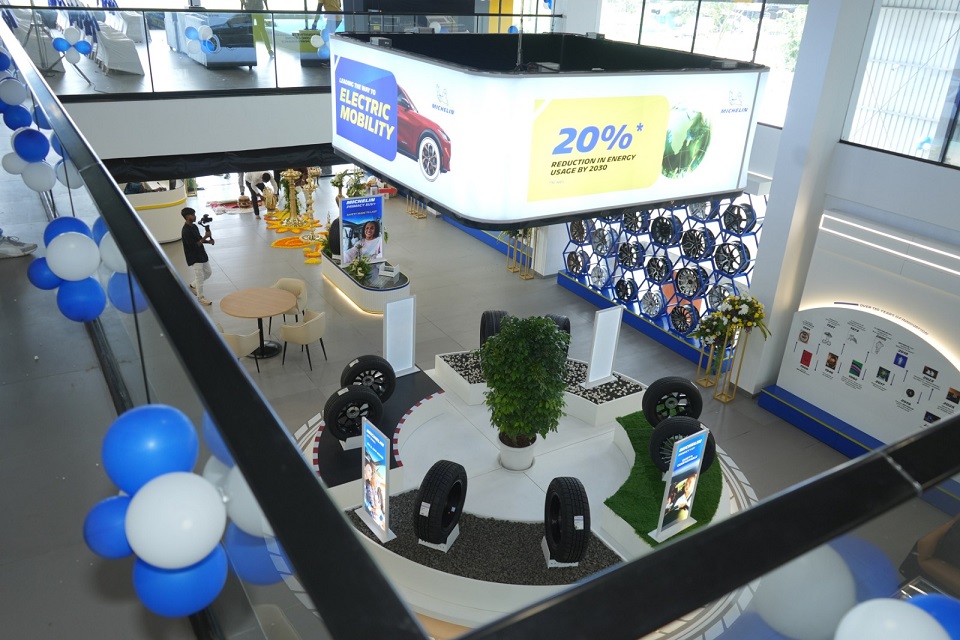 Together, these developments mark a decisive shift in how tyre brands engage customers. Tyre stores are increasingly functioning as lifestyle environments, designed for comfort, informed decision-making, personalisation, transparency and community. The industry is moving away from a product-first mindset to a customer-experience-led philosophy.
Together, these developments mark a decisive shift in how tyre brands engage customers. Tyre stores are increasingly functioning as lifestyle environments, designed for comfort, informed decision-making, personalisation, transparency and community. The industry is moving away from a product-first mindset to a customer-experience-led philosophy.
As premium cars, SUVs and EVs become mainstream, and as younger motorists prioritise digital empowerment and ambience, tyre retailers are aligning with these new expectations. India’s tyre makers are building a retail landscape where experiential engagement, technology integration, service breadth and emotional connection define long-term brand success.
For an industry long anchored in grease, metal and functionality, the transformation is profound. Tyre retail in India is no longer just about fitment; it is becoming a premium mobility experience, curated for a generation that demands clarity, comfort and an elevated relationship with every aspect of vehicle ownership.
Kumho Tire To Build First European Plant In Poland With $587mln Investment
- By TT News
- December 05, 2025
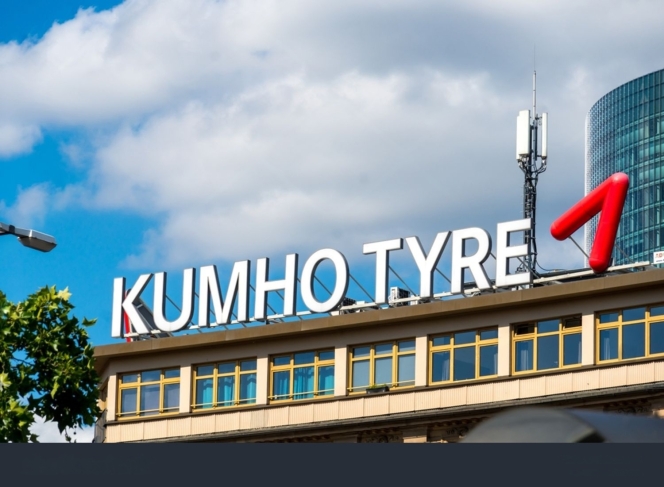
Kumho Tire will establish its first European manufacturing plant in Poland’s Opole region as the South Korean company seeks to expand its position in one of the world’s largest tyre markets.
The group said the factory is scheduled to begin initial operations in August 2028, subject to investment approval and licensing. Kumho plans to produce 6m units annually in the first phase and expand capacity in line with demand. Total planned investment is USD 587 million.
Kumho has spent recent years evaluating multiple European locations, including Poland, based on logistics, labour availability, infrastructure, market access and investment incentives. The company said Opole was selected as the optimal site owing to supply-chain stability within the EU and the region’s supportive operating conditions.
Europe accounts for about a quarter of global tyre consumption and is home to several major automotive manufacturers. The region represented roughly 26.6 per cent of Kumho’s sales last year. The company has previously relied on exports to serve European customers, which it said limited its competitiveness in the market.
The new plant is intended to strengthen Kumho’s ability to supply high-value-added products, including high-performance and larger-diameter tyres, to European vehicle makers.
Kumho currently operates eight production sites across South Korea, China, the US and Vietnam, with combined annual output of 65 millionunits. The Polish plant will complete what the company describes as a production network spanning Asia, Europe and North America.
Jung Il-taek, Kumho Tire’s Chief Executive, said: “The European market occupies a very important strategic position in the global tire industry,” adding that “Kumho Tire will go beyond simple exports and dramatically enhance premium brand value by strengthening quality and service competitiveness through local European production and supply.”
Tyre Stewardship Australia Appoints David Fraser As Chair As David Spear Steps Down
- By TT News
- December 04, 2025
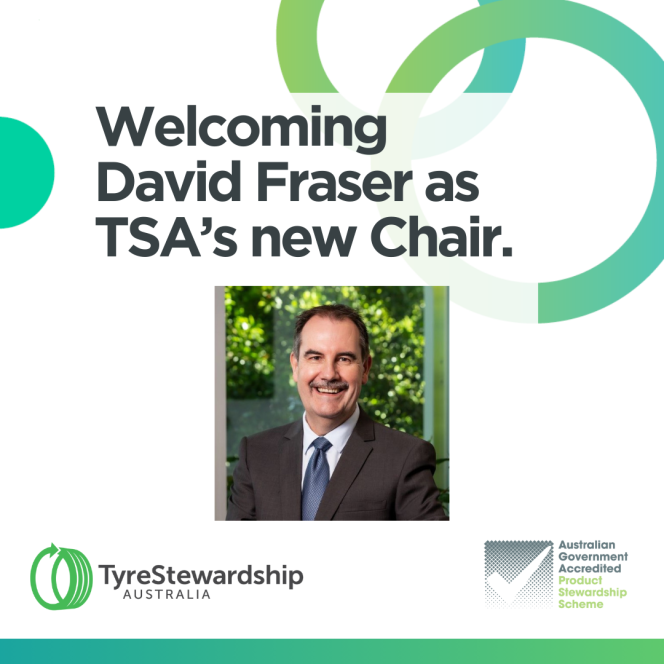
Tyre Stewardship Australia has appointed David Fraser as its new chair, succeeding David Spear after nine years in the role during a period of regulatory and industry change in the country’s tyre-recycling sector.
Spear’s departure closes what the organisation described as a challenging yet incredibly important chapter for its efforts to advance circular outcomes for Australia’s end-of-life tyres. TSA, an industry body backed by government and sector participants, oversees the national stewardship scheme and promotes recycling and re-use pathways for waste tyres, an area facing increasing scrutiny under Australia’s environmental and product-stewardship policies.
In a statement, TSA said it “thank[s] him for his unwavering support and dedication to driving circular outcomes for Australia’s end-of-life tyres”.
Fraser, a TSA director since 2023, brings experience in governance and compliance. He joins at a time when Australian states are tightening environmental standards and seeking to reduce landfill through higher recycling targets. TSA said Fraser has “deep understanding of our strategy, our challenges and the opportunities ahead”.
The organisation added: “We look forward to his leadership as TSA enters its next chapter.”
TSA also expressed appreciation to Spear “for your contribution and support of our mission”, and welcomed Fraser, saying it is “excited and ready for what lies ahead”.







Comments (0)
ADD COMMENT